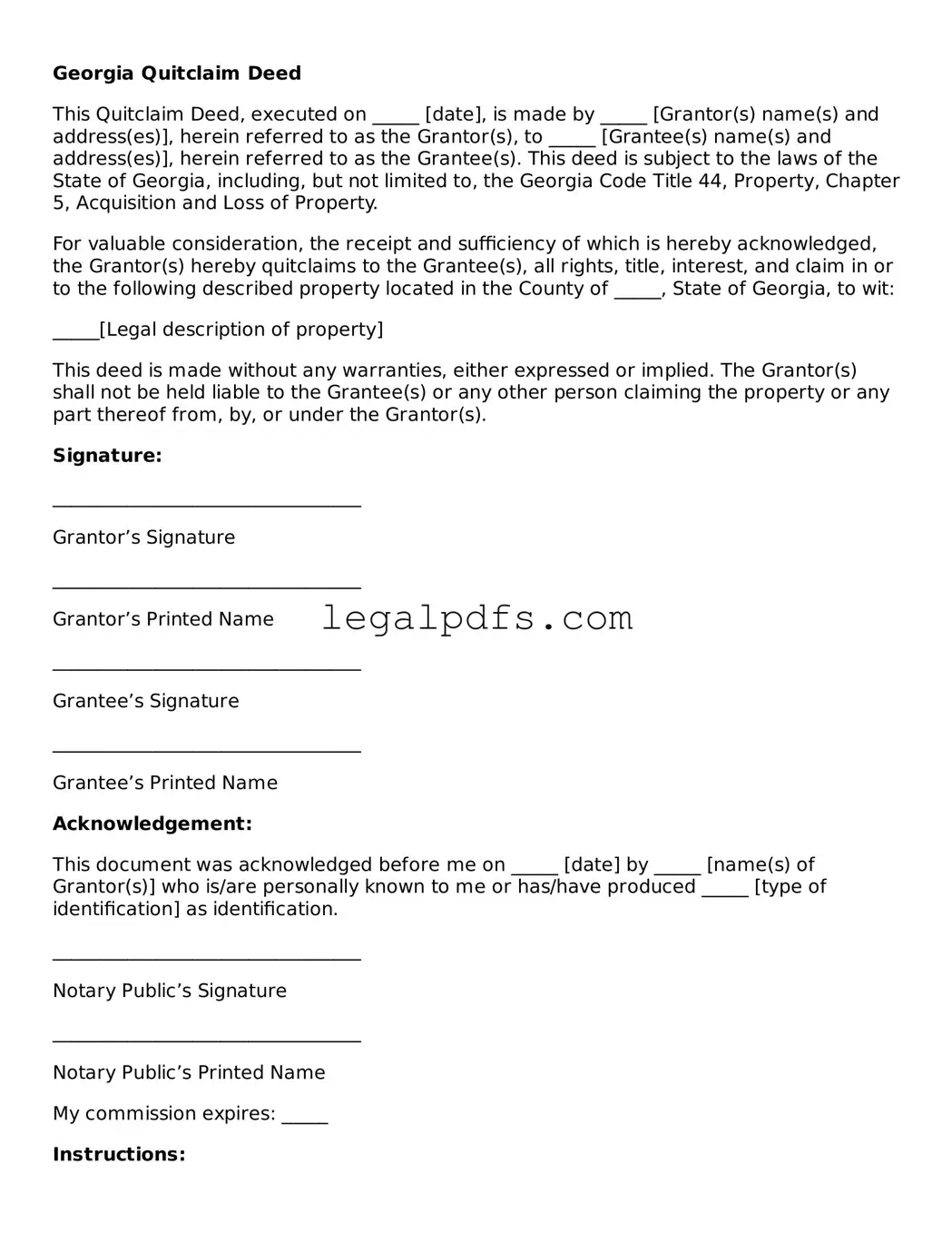What is a Georgia Quitclaim Deed form?
A Georgia Quitclaim Deed form is a legal document used to transfer interest, or ownership, of real property from one person (the grantor) to another (the grantee) without warranties of title. This means that the seller does not guarantee that they own the property free and clear of all liens and encumbrances.
When should one use a Georgia Quitclaim Deed?
This form is typically used among family members, in divorce settlements, or in other situations where the property is gifted, rather than sold. It is not recommended for use in transactions where the buyer expects a guarantee of clear title.
Does a Georgia Quitclaim Deed guarantee a clear title?
No, a Quitclaim Deed does not guarantee a clear title. It transfers whatever interest the grantor has in the property, if any, without any guarantee or warranty. Buyers should conduct a thorough title search beforehand.
Are there any specific requirements for a Georgia Quitclaim Deed to be valid?
Yes, for a Quitclaim Deed to be valid in Georgia, it must contain the legal description of the property, be signed by the grantor, and be notarized. Additionally, it should be filed with the county recorder’s office where the property is located.
What is the difference between a Quitclaim Deed and a Warranty Deed in Georgia?
The main difference is the level of protection for the buyer. A Warranty Deed guarantees that the title is clear and the seller has the right to sell the property. A Quitclaim Deed offers no such warranties or guarantees.
How does one file a Quitclaim Deed in Georgia?
After ensuring the Quitclaim Deed is completed, signed, and notarized, it should be filed with the Clerk of the Superior Court in the county where the property is located. Recording fees apply and vary by county.
Can a Quitclaim Deed be revoked?
Once a Quitclaim Deed is executed and delivered to the grantee, it cannot be revoked unless the grantee agrees to relinquish their rights to the property, typically through a similar legal document.
What happens if a Quitclaim Deed is not recorded in Georgia?
Recording the deed is not a requirement for it to be valid. However, failing to record the deed might not protect the grantee against claims from third parties. Thus, it’s strongly recommended to record the deed.
Does the grantor need a lawyer to prepare a Quitclaim Deed in Georgia?
While not required, it is advisable to consult with a lawyer when preparing legal documents, including a Quitclaim Deed, to ensure it meets all legal requirements and accurately reflects the agreement between the parties.
Are there any tax implications when transferring property using a Quitclaim Deed in Georgia?
Transferring property can have tax implications, including potential liability for federal gift taxes. Specific circumstances can vary widely, so it is wise to consult a tax professional for advice tailored to your situation.
